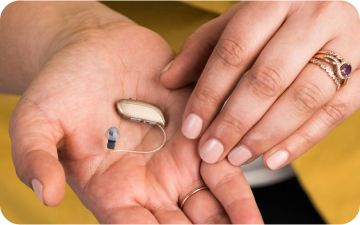
Everyone wants the things that they buy to work the way they’re supposed to. You want to get the quality product that you pay for. And hearing aids are no exception. But how can you be certain that the hearing aids you just bought are actually working the way they’re supposed to?
Know the Specs

The table to the left shows the results of an electroacoustic analysis (EAA), a test that we do to see if a hearing aid is within tolerance. The American National Standards Institute (ANSI) sets the tolerances for each of these measures which dictate how much the measured value can vary from the published specs and still meet quality control standards.
Standard Specs
- OSPL 90 – This is the maximum output of the hearing aid. Basically, it’s as loud as the hearing aid can get when it’s maxed out and it detects a loud sound.
- FOG 50 – This represents the maximum gain that the hearing aid can provide. Gain is the amount of sound that the hearing aid adds to what you would normally hear.
- RTS – This represents the typical volume setting for the hearing aid for the average user. It’s used to calculate the frequency response, distortion, and battery drain.
- HFA – This stands for “High Frequency Average.” It’s the average reading for each curve over the higher pitches.
- THD – Total Harmonic Distortion. This is about how much the hearing aid distorts sound at each pitch.
Who Cares About Specs?
We do, and you should too! If your hearing aid doesn’t meet specs, it’s not working the way it’s supposed to. And if your new hearing aid doesn’t meet specs… well, then you might not have gotten the quality you paid for.
We believe you deserve to get the quality that you paid for. And that it’s our responsibility to make sure of it. That’s why Link Audiology makes it a priority to do an electroacoustic analysis on all our hearing aids before our patients buy them. If your hearing aid doesn’t meet specs, we send it back and get a replacement. Because our commitment is that all our patients receive the best care and the best products at the best price.

